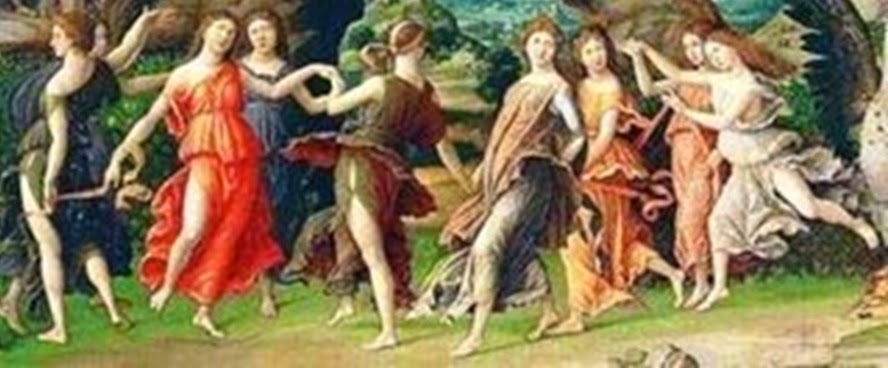Greek mythology, its gods, demigods, heroes, nymphs and muses is a rich source of legends and myths loaded with symbolism. Muses, lovely divine beings were patrons of the arts (and sciences), whose leader was the beautiful Apollo, god of music and arts.
In some legends there are only three muses: Melete – health muse, Mneme – memory muse and Aoide – music muse. However, in most legends speak of the nine muses, sisters born of goddess Mnemosyne, memoir goddess. Their father was Zeus himself, the ruler of Olympus. Other legends say that the sisters were daughters of the goddess Harmonia (she, being a daughter of Aphrodite, goddess of love, and Ares, god of war).
The muses appear in many of the beautiful greek legends, doesn’t have great roles the legends of Olympus; but as every story in greek mythology, carries inherent significance, is a symbol, and the muses are symbolic creations, their idea being associated with the idea of art and science that each represent. Ther are stories that attribute them romantic adventure with other deities, but their purpose and meaning was symbolic.
Muses are delightful and delighting the gods of Olympus with their music and dance, led by Apollo. It is said that they lived in the beautiful forests of Mount Helicon, which ascended to heaven because of the beauty of music sung by girls. Them are not only patron of the arts, their mother sending them knowledge and power of everything.
Without muses, people would not find the creation inspiration, would not have known the beauty of music, dance and the arts in general. Indeed, every artist needs a muse. Muses protect people who are dedicated to arts.
Patron of the arts, muses, its said, that would had militated for beauty and peace, convincing people and their kings not to fight, but to celebrate the beauty. Through art one can get over his life and nothingness and can rise; through art, one can approache the gods; through art one can find peace and forget the war. Muses are sources of inspiration, knowing and are all good being and pure as art. Greek legends say that the first time the muses sing, they celebrate the victory of order over chaos, of life over the destruction , the gods of Olympus on the Titans.
The nine muses of greek mythology are:
• Calliope – muse of epic poetry, the most famous muse, assigning the knowledge, pictured as a woman with a papyrus scroll and a pen; is also the mother of Orpheus.
• Erato – the muse of erotic and romantic poetry , imagined as a young woman with a harp and lyre;
• Euterpe – the muse of lyric poetry, pictured as a woman with a flute;
• Thalia – muse of comedy, pictured as a girl who holda a stick and a mask;
• Clio – muse of history, pictured as a woman with a book in hand;
• Polymnia – Muse of rhetorics, assigning the learning too, memoir and art of mime, pictured as a woman who supports her hands meditating;
• Terpsichore – muse of dance, pictured with a lyre in hand;
• Melpomene – muse of song and tragedy, pictured with a mask in hand and a crown of vines; legends say that she is the mother of mermaids, lovely beings who seduce sailors with their songs.
• Urania – the only muse patronizing science, astronomy and geometry, pictured as a woman with a crown of stars and a compass in hand.








